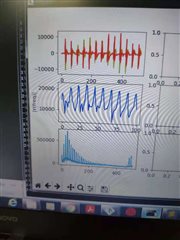When using iwr1443 in ultra low temperature (-40 degree), we got strange raw adc data. We made a tool to visualize the raw adc data, zoom fft data and full fft data, as showed in the picture respectively.
-
Ask a related question
What is a related question?A related question is a question created from another question. When the related question is created, it will be automatically linked to the original question.


 Iwr1443 runs in partial calibration mode, is that might be the reason of this strange phenomenon?
Iwr1443 runs in partial calibration mode, is that might be the reason of this strange phenomenon?